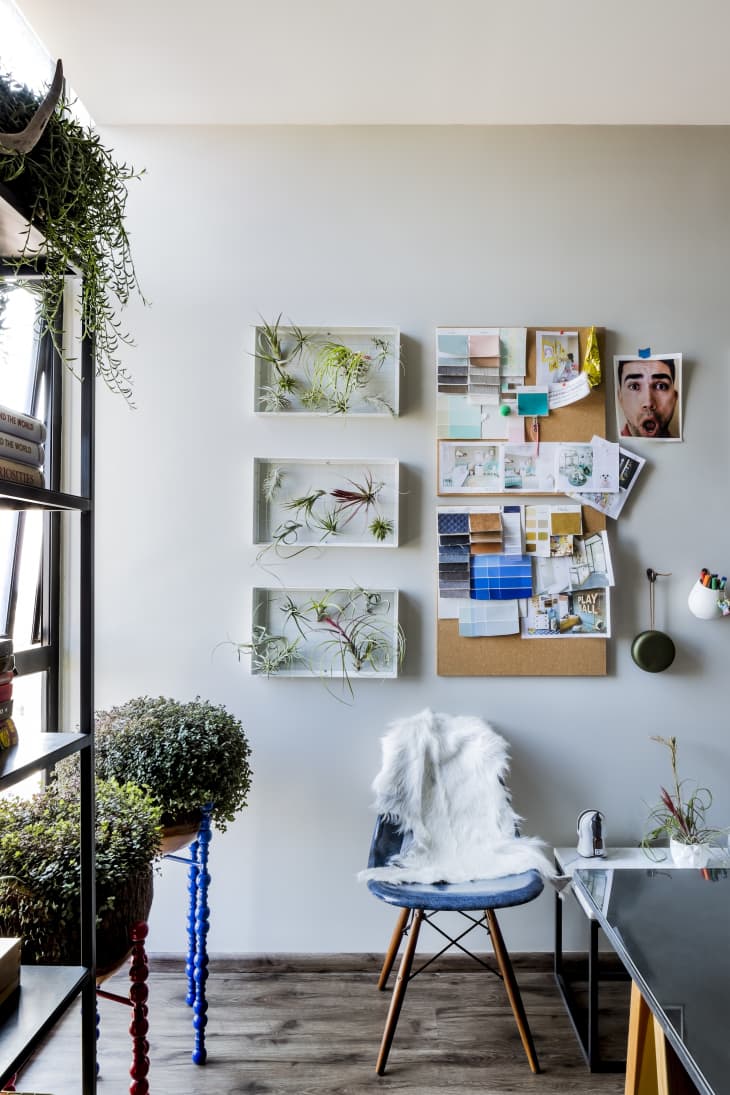
On paper, air plants sound like a dream for low-maintenance types. No pots or dirt, infrequent watering, and an endless variety of creative ways to display them without taking up a lot of space: all tempting too-good-to-be-true reasons for a little impulse plant purchase. But if you’ve ever owned an air plant, you know they don’t quite live up to the hype of being indestructible. There is a ton of misinformation out there, and, if you don’t know what you’re doing, they are surprisingly easy to send to the plant cemetery.
Here are the care details you need to know to keep your cute little air plants healthy and happy.

About This Plant
Most airplants sold in shops are members of the Tillandsia genus. They are epiphytes that cling to the crooks and branches of trees in Central and South America, the West Indies, and southern United States. There are varieties adapted to grow in rainforests, mountains, deserts and swamps, but what they all have in common is that they grow without rooting in soil.
The ASPCA doesn’t have an entry about airplants, but other sources indicate that they’re likely non-toxic to pets. Stories abound of pets thinking that airplants are a fun new toy or snack, however, which doesn’t usually end well for the plant, so you’ll probably want to keep your airplants away from your furry companions.

Where to Grow
It’s a myth that you can grow air plants anywhere: Air plants need bright, indirect light in order to thrive long-term. Rooms with southern or eastern facing windows are best, but other bright rooms can be fine, as long as the plants don’t get roasted in too much intense direct sun. They prefer temperatures between 50-90 degrees farheinheit (or 10-32 degrees celsius).
If you don’t have enough natural light, you can grow air plants under full-spectrum fluorescent lights. Regular incandescent lights won’t cut it, but you can buy special grow lights and put them on a timer. The plants will need a minimum of twelve hours per day of light, and should be no more than three feet from the light source.

Care
If you’re thinking, “Care? What care?” that’s one of the common misconceptions about air plants. Despite the name, they need regular watering in addition to air. How often you need to water will vary depending on the temperature, light, and humidity, which will likely change throughout the year. Brighter, hotter, and drier conditions means your plant will need to be watered more often, while colder, darker, damper conditions means less watering is necessary. As with most plants, it is easier to kill by over-watering than under-watering, so err on the side of benign neglect.
Watering recommendations vary widely, but as a starting point, water your airplant every two weeks. Early in the day, submerge and soak the plant in tap water for 20-30 minutes, then remove it, gently shake it off, and put it upside down on a towel in a bright location. It is important that it is able to fully dry out in 4 hours or less, otherwise the plant may rot and die. If it is taking too long to dry out, put it in a brighter location with better air circulation.

How do you know if you’re properly watering your airplant? Brown, crispy leaf tips means it’s not getting enough water, so you may need to soak more often, add weekly misting into your routine, or move it to a humid location like a steamy bathroom. If the base of the plant turns black or brown and leaves are falling out, it has probably been overwatered and is rotting. Time to toss it out and start over, because it’s beyond saving once it is rotting.
Although it’s not required, you can add a pinch of orchid or bromeliad fertilizer to the soaking water once a month to help keep your airplant happy.

How to Propagate
Once in its lifetime, an airplant will flower, and around this time it will send out “pups,” baby airplants. Leave the baby plants attached to the mother until they’re about ½-to-⅓ of the mother plant size, then gently pull or cut them free. After it has flowered, the mother plant will eventually die. (Cue Lion King’s “Circle of Life.”)
Hải Yến
Gió bạn với cây tự buổi nào ,
Gió về cây lại ngất ngư chao .
Gió đi cây sẽ im lìm đứng,
Như kẻ lỡ làng dạ khát khao .



